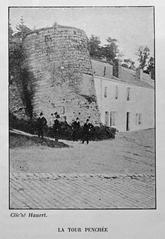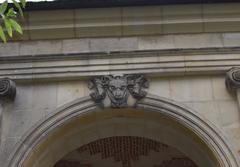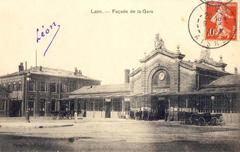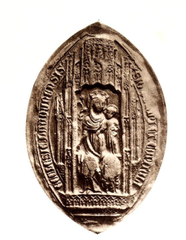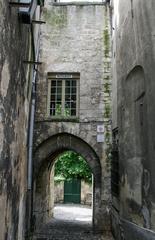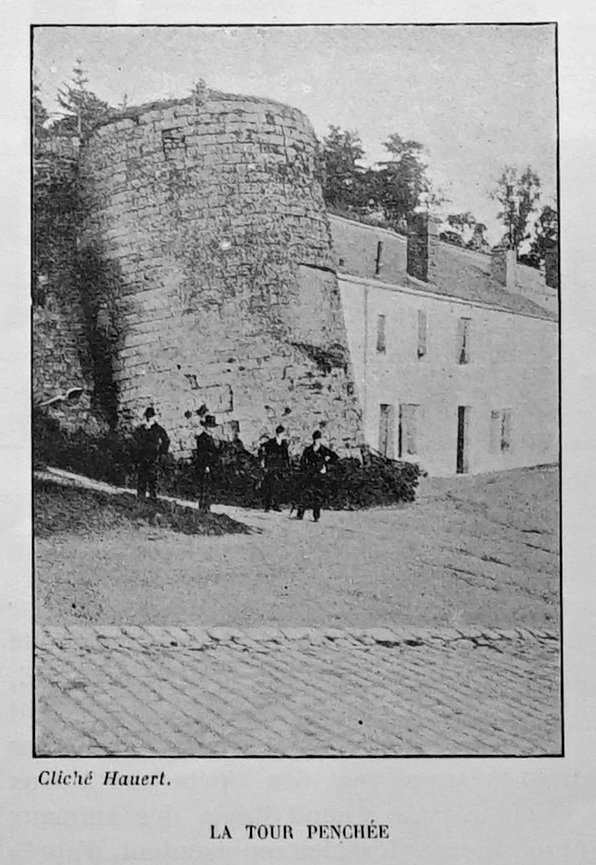
Tour Penchée de Laon: Visiting Hours, Tickets, and Historical Sites in Laon, France
Date: 14/06/2025
Introduction
The Tour Penchée de Laon—also called the Leaning Tower of Laon or Dame Eve—is a striking symbol of Laon’s medieval history. Perched atop a limestone plateau in the historic heart of Laon, northern France, the tower is distinguished by its remarkable ten-degree tilt and its enduring presence as part of the city’s ancient fortifications. Dating back to the 12th and 13th centuries, the Tour Penchée is not only an architectural curiosity but also a testament to Laon’s strategic and cultural significance throughout history (Laon Tourism, Hauts-de-France Tourism, Visites-p.net). This guide provides comprehensive information on visiting hours, tickets, accessibility, nearby attractions, and practical tips, ensuring you make the most of your visit to one of northern France’s most intriguing medieval landmarks.
1. Historical Background
Early Origins and Strategic Role
Laon’s origins trace back to the Gaulish period, with the city’s natural elevation making it a stronghold against invaders, including Attila the Hun. As Laon became a religious and political center, its fortifications—including the Tour Penchée—were reinforced to protect against external threats (visites-p.net). The tower’s position by the Porte de Soissons made it a crucial defensive asset.
Construction, Architecture, and the Lean
Constructed in the 12th-13th centuries as part of Laon’s ramparts, the Tour Penchée features thick limestone walls and narrow slit windows typical of medieval military architecture (axone-mag.fr). Its pronounced tilt, caused by uneven settling of the limestone subsoil and possibly by underlying galleries, makes it unique in France (planet-terre.ens-lyon.fr). Despite this lean, the structure has survived centuries of weather, war, and partial demolition attempts.
Preservation and Heritage Status
Recognized as a Monument Historique since 1929, the Tour Penchée is protected by French heritage laws and ongoing conservation efforts (monumentum.fr). Its preservation ensures that future generations can appreciate the tower’s unique architectural and historical value.
2. Visiting the Tour Penchée de Laon
Location and Access
The Tour Penchée is located in Laon’s medieval city center, easily accessible on foot from the Cathédrale Notre-Dame de Laon and Place du Général Leclerc. Laon is approximately two hours northeast of Paris by car or regional train. The upper town’s pedestrian-friendly layout makes it ideal for exploring on foot, though the steep ascent from the lower town may require use of local buses or taxis (WildTrips).
Visiting Hours and Tickets
- Exterior Access: The tower’s exterior is accessible year-round, 24/7, as part of the public ramparts walk. No ticket is required for viewing or photographing the tower from outside.
- Interior Access: The interior is generally closed to the public, but may open for special events such as European Heritage Days. For updates on access and special openings, consult the official Laon Tourism website.
Accessibility
The ramparts and surrounding walkways are generally well-maintained, but cobblestones and uneven terrain can be challenging for those with limited mobility. The tower itself is not wheelchair accessible. Visitors are advised to wear sturdy, comfortable shoes.
Guided Tours
Guided tours offered by the Laon Tourist Office include the Tour Penchée as part of broader historical walks. These tours provide valuable context on the tower’s history, architecture, and legends (Explore guided tours). English-language tours may be available during peak seasons or by request.
3. Visitor Experience and Practical Tips
Photography and Views
The Tour Penchée is a highlight for photographers, especially during sunrise and sunset. The tower’s distinctive lean, coupled with sweeping views of Laon’s rooftops and the Picardy plains, offers unique photo opportunities (Fizzer.com).
Nearby Attractions
- Cathédrale Notre-Dame de Laon: An exceptional Gothic cathedral within walking distance.
- Porte de Soissons: One of the city’s historic gates adjacent to the tower.
- Musée d’Art et d’Archéologie: Regional artifacts and exhibitions.
- Chapelle des Templiers: A rare Templar chapel.
- Souterrains de Laon: Guided tours of the city’s underground tunnels.
Events and Best Visiting Times
The best time to visit is from May to September, when weather is mild and the city hosts events like the Fêtes Médiévales and the Circuit Historique de Laon car rally (Event details). Spring and early autumn offer pleasant conditions and fewer crowds.
4. Cultural Significance
The Tour Penchée is emblematic of Laon’s resilience and identity, featured in 19th-century engravings and travel literature. It is celebrated for its architectural uniqueness and its role in local legends, such as the tale of Dame Eve (Paris Plus Plus). The tower’s preservation as a Monument Historique underlines its importance within France’s national heritage.
5. Accommodation and Amenities
Laon’s upper town offers a range of accommodations, from boutique hotels to guesthouses within walking distance of the Tour Penchée. Recommended options include Hôtel Saint Vincent, Hôtel Des Arts, and Le 15 – Maison de Prestige (Musée du Patrimoine). Dining choices range from traditional cafés to fine restaurants, and public restrooms are available near main squares.
6. Frequently Asked Questions (FAQ)
Q: Do I need a ticket to visit the Tour Penchée?
A: No, viewing the exterior is free and open year-round.
Q: What are the visiting hours for the Tour Penchée?
A: The ramparts and exterior are accessible 24/7; interior access is limited to special events.
Q: Is the site accessible for visitors with limited mobility?
A: The ramparts have cobblestones and uneven surfaces; accessibility is limited.
Q: Are guided tours available?
A: Yes, broader walking tours including the Tour Penchée are available through the Laon Tourist Office.
Q: Can I take photos of the tower?
A: Yes, it is a popular subject for photography.
7. Sustainability and Responsible Tourism
Laon encourages visitors to respect its historic environment by staying on marked paths, not climbing on monuments, and disposing of litter responsibly. The city’s designation as a “Ville d’Art et d’Histoire” reflects its commitment to sustainable tourism and heritage preservation (Fizzer.com).
8. Contact and Further Information
- Laon Tourist Office: Place du Parvis Gautier de Mortagne, 02000 Laon, France
Phone: +33 3 23 20 28 62
Website: Laon Tourist Office Official Site
For more details, see the Musée du Patrimoine website.
9. Conclusion
The Tour Penchée de Laon is a captivating example of medieval engineering and local legend, offering visitors a window into the fortified past of Laon and the broader Picardy region. With its free year-round access, unique architectural features, and proximity to other historic sites, it’s a must-visit for history buffs, architecture lovers, and curious travelers alike. Remember to check for current opening times, join a guided tour for extra insight, and explore Laon’s rich heritage at your own pace.
Enhance your experience by downloading the Audiala app for guided tours, insider tips, and up-to-date information on Laon’s heritage sites. Enjoy your journey through Laon’s history!
References
- Laon Tourism
- Hauts-de-France Tourism
- Visites-p.net
- Axone-mag.fr
- Planet-terre.ens-lyon.fr
- Monumentum.fr
- Paris Plus Plus
- Fizzer.com
- Triplyzer.com
- Musée du Patrimoine
- WildTrips
- Scenic Car Tours
